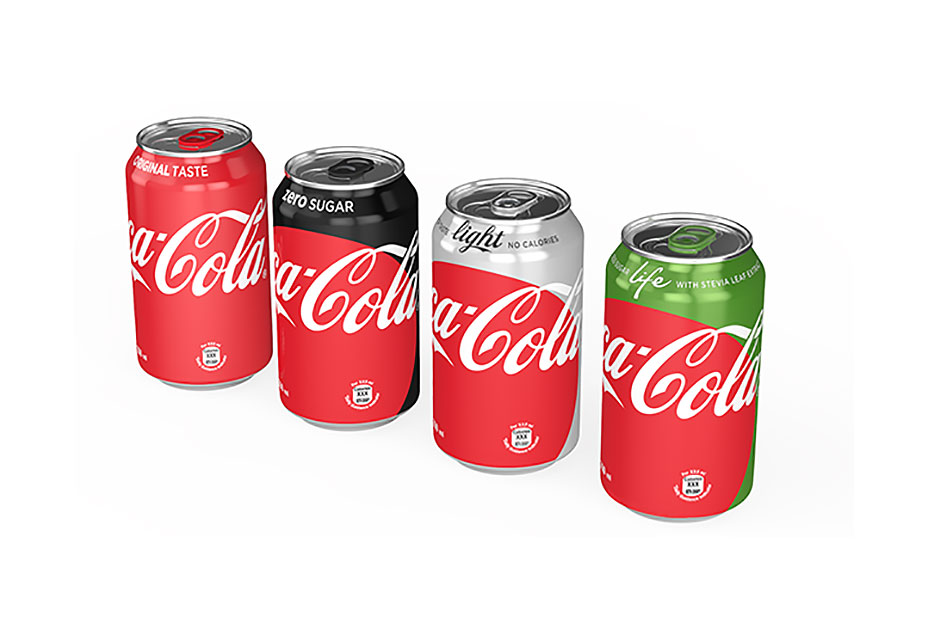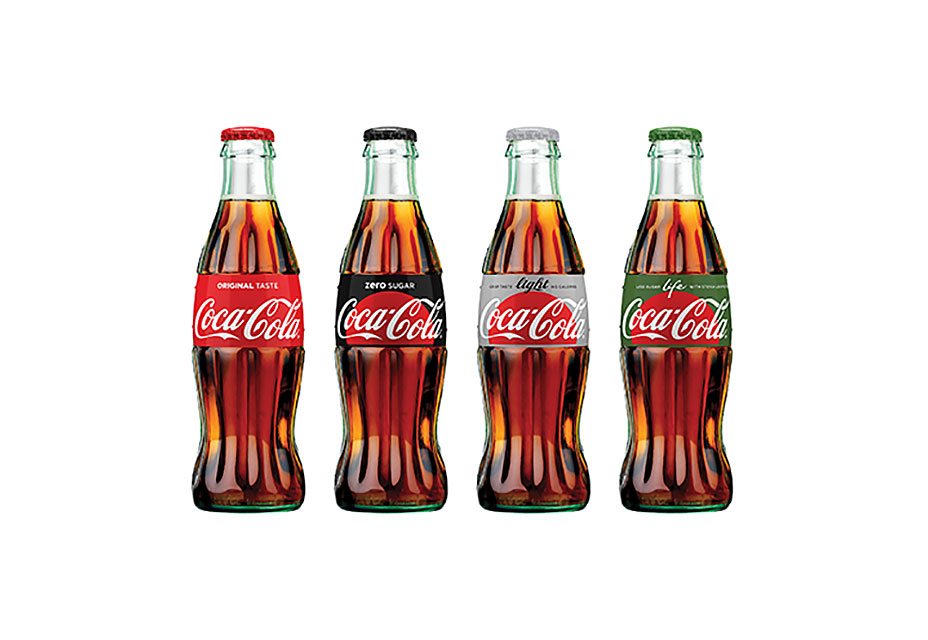
 The red disk also has a history with the company’s branding from long ago; originally, the red disc was used in Coke ads from the 1930s; then in the 1940s it was utilized as a signage system in retail locations to tell the public where to buy ‘genuine’ coke. In practical terms, the company hopes that this means newer lines such as Coke Life will gain some of the credibility that the heritage of the classic line of Coke already enjoys.
Of course, different Coke products will still retain a small sense of uniqueness by displaying their own brand colors as part of the packaging. And the red disc will adapt to the specific context in which it is being presented on packaging.
The red disk also has a history with the company’s branding from long ago; originally, the red disc was used in Coke ads from the 1930s; then in the 1940s it was utilized as a signage system in retail locations to tell the public where to buy ‘genuine’ coke. In practical terms, the company hopes that this means newer lines such as Coke Life will gain some of the credibility that the heritage of the classic line of Coke already enjoys.
Of course, different Coke products will still retain a small sense of uniqueness by displaying their own brand colors as part of the packaging. And the red disc will adapt to the specific context in which it is being presented on packaging.
 The unified brand approach is significant because over the last three decades, Coke’s approach to branding has been to design in visual distinction to enhance the difference between their drink options. Changes in consumer tastes and an awareness of healthier options means that full sugar Coke is losing ground to Diet Coke; if the trend continues, the new brand approach means that in future we’ll still think of Coke red, rather than diet grey.
The unified brand approach is significant because over the last three decades, Coke’s approach to branding has been to design in visual distinction to enhance the difference between their drink options. Changes in consumer tastes and an awareness of healthier options means that full sugar Coke is losing ground to Diet Coke; if the trend continues, the new brand approach means that in future we’ll still think of Coke red, rather than diet grey.
Marc Schenker
Marc’s a copywriter who covers design news for Web Designer Depot. Find out more about him at thegloriouscompanyltd.com.
Read Next
15 Best New Fonts, July 2024
Welcome to our monthly roundup of the best fonts we’ve found online in the last four weeks. This month, there are fewer…
By Ben Moss
20 Best New Websites, July 2024
Welcome to July’s round up of websites to inspire you. This month’s collection ranges from the most stripped-back…
Top 7 WordPress Plugins for 2024: Enhance Your Site's Performance
WordPress is a hands-down favorite of website designers and developers. Renowned for its flexibility and ease of use,…
By WDD Staff
Exciting New Tools for Designers, July 2024
Welcome to this July’s collection of tools, gathered from around the web over the past month. We hope you’ll find…
3 Essential Design Trends, July 2024
Add some summer sizzle to your design projects with trendy website elements. Learn what's trending and how to use these…
15 Best New Fonts, June 2024
Welcome to our roundup of the best new fonts we’ve found online in the last month. This month, there are notably fewer…
By Ben Moss
20 Best New Websites, June 2024
Arranging content in an easily accessible way is the backbone of any user-friendly website. A good website will present…
Exciting New Tools for Designers, June 2024
In this month’s roundup of the best tools for web designers and developers, we’ll explore a range of new and noteworthy…
3 Essential Design Trends, June 2024
Summer is off to a fun start with some highly dramatic website design trends showing up in projects. Let's dive in!
15 Best New Fonts, May 2024
In this month’s edition, there are lots of historically-inspired typefaces, more of the growing trend for French…
By Ben Moss
How to Reduce The Carbon Footprint of Your Website
On average, a web page produces 4.61 grams of CO2 for every page view; for whole sites, that amounts to hundreds of KG…
By Simon Sterne
20 Best New Websites, May 2024
Welcome to May’s compilation of the best sites on the web. This month we’re focused on color for younger humans,…














